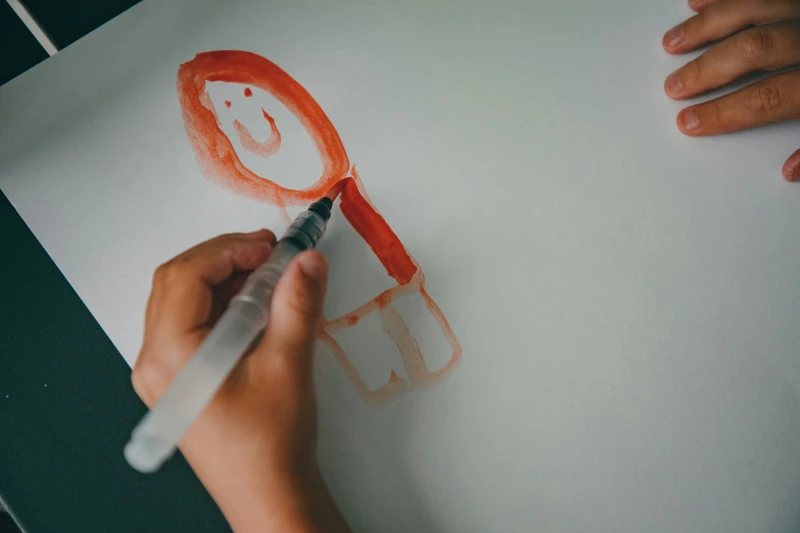
Understanding age-specific characteristics helps parents and professionals create an environment where a child feels safe, develops cognitively and emotionally, and learns to interact with others. Each child develops at their own pace: temporary 'shifts' compared to standardized charts usually fall within the normal range and do not indicate a problem by themselves (WHO, APA).
Theories That Help Understand Developmental Stages
Cognitive Development (J. Piaget)
Piaget described the transition from sensorimotor learning in infancy to operations in school-age years: the child increasingly manipulates objects mentally, understands causality and rules. This explains why abstract tasks are difficult at age 5 but become manageable at 9–10.
Sociocultural Perspective (L. Vygotsky)
According to Vygotsky, development happens through interaction with adults and peers. The zone of proximal development includes tasks a child cannot do alone but can complete with support. Practically this means: “show — do together — try independently,” gradually reducing assistance.
Psychosocial Challenges (E. Erikson)
Erikson identified the “challenges” of each stage: from trust in infancy to identity formation in adolescence. Successfully navigating a stage strengthens competence and self-esteem.
Developmental Stages: From Birth to Adolescence
Infancy (0–12 months): Attachment and Sensorimotor Skills
Key milestones: forming secure attachment to caregivers, motor development (rolling over, crawling), visual and auditory tracking, babbling. A simple example: when a baby cries, the caregiver responds, creating a cycle that builds trust and safety for exploration (APA: attachment).
Toddlerhood (1–3 years): Autonomy and Speech
First words and short phrases appear, along with a strong drive for independence (“me do it!”). Both gross and fine motor skills develop (walking, drawing), as do self-care abilities. Tantrums often reflect limited self-regulation, not stubbornness. Short instructions, predictable routines, and limited choices help: “red or blue cup?”
Preschool Age (3–6 years): Play, Imagination, and Rules
Role-play becomes central. Children explore social roles, practice speech, and learn to follow rules. “Why” questions emerge, vocabulary expands, and empathy develops. Encourage free play and open conversations: “Why do you think this character acted that way?”
Early School Age (6–10 years): Learning Motivation and Self-Control
Executive functions strengthen — attention, working memory, planning. Children learn to finish tasks, experience success and mistakes at school and in sports. Constructive feedback focused on effort (“you practiced, that’s why it worked”) is more effective than labels (“you’re smart/not smart”). Friendships, fairness, and teamwork become important.
Preteens and Adolescents (10–17 years): Abstract Thinking and Identity
Abstract thinking grows: teens explore possibilities, try out styles and interests, and form an identity. Emotional reactions and reward systems shift, increasing sensitivity to peer evaluation and impulsivity. Combining boundaries with dialogue works best: “Rules exist, and we’re open to discussing reasons and consequences” (Harvard Health).
Factors Shaping Development: Biology, Environment, and Relationships
Development is multifactorial: genetics and the nervous system interact with nutrition, sleep, safety, learning opportunities, parenting style, relationships, and stress. Risk factors (chronic stress, abuse, neglect) can slow progress, but a supportive environment, access to education, and responsive care foster resilience.
How to Support Children at Every Stage
Infants
- Tactile contact, responsiveness to signals, “conversations” through babbling and smiles.
- Safe spaces for movement and exploration; balanced sleep and wake routines.
Ages 1–3
- Reading aloud, simple games, small household tasks with adults.
- Short instructions, binary choices, patience with the “terrible twos.”
Ages 3–6
- Role-play, drawing, building; discussing emotions through stories and fairy tales.
- Daily routines and clear, friendly rules.
Ages 6–10
- Help with planning: checklists, calendars, step-by-step guides.
- Encourage effort and interests — sports, clubs, science activities.
Adolescents
- Provide autonomy and peer interaction with clear boundaries.
- Openly discuss risks (internet, substances, safety), support choices, and normalize mistakes.
When to Seek Professional Help
Consider consulting if there is: prolonged loss of previously acquired skills; absence of babbling or pointing by 12 months, single words by 16–18, or simple phrases by 24–30; persistent difficulty with play or social contacts; severe sleep/feeding issues; frequent intense tantrums beyond age 4–5; significant anxiety or sadness disrupting daily life. Assessment is multidisciplinary, and recommendations are always individualized.
Common Myths and Facts
- “All children must talk by age 2.” Norms vary widely; the key is overall communication progress (gestures, eye contact, understanding).
- “Praise spoils children.” Constructive feedback focused on effort strengthens motivation and persistence.
- “Teens always rebel.” Separation is natural; respectful dialogue and agreements usually reduce conflict and preserve connection.
Cultural and Individual Variability
Rates and pathways of development depend on family and cultural context: some cultures promote independence earlier, others emphasize collective activities. Schools may stress competition or teamwork. What matters is comparing a child to their own “yesterday” and circumstances (PubMed: reviews on development stages).
Practical Guidelines for Parents
- Routine, sleep, nutrition — foundation for emotions and focus.
- Daily movement and play: from peek-a-boo and crawling to sports and hiking.
- Conversations at the child’s level: fewer lectures, more questions and shared solutions.
- Screen time — age-appropriate and co-viewed: discuss content and set boundaries (Harvard Health).
- Collaboration with schools/daycares: sharing observations supports timely help.
Further Reading (Trusted Sources)
- Mayo Clinic — Children’s Health
- WebMD — Child Development: Ages and Stages
- PubMed — Reviews on child development stages
Disclaimer: This material is for informational purposes only and does not replace professional consultation. If symptoms are present, consult a psychologist or physician.


